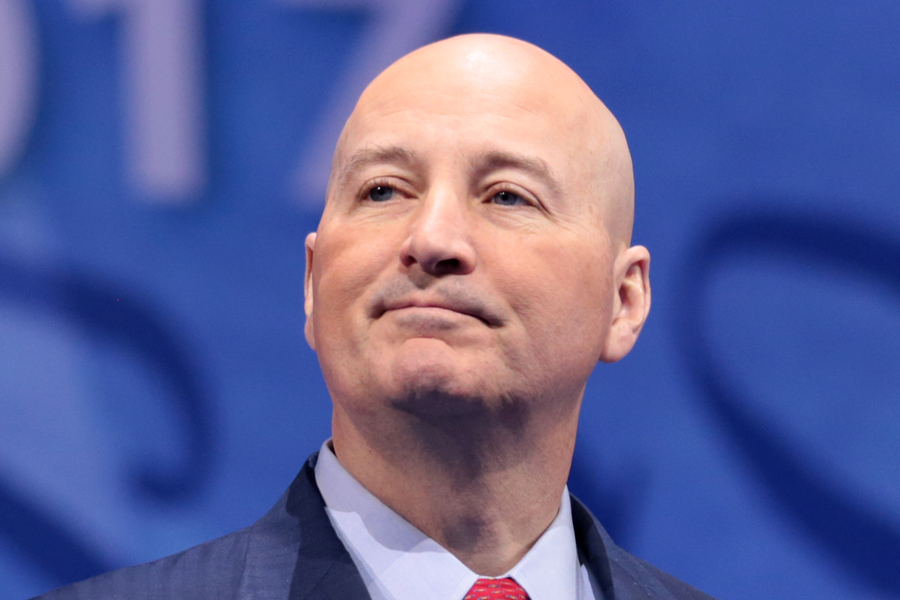Surge in Fertilizer Price Brings New Challenges
By Guyla Mills
Nebraska farmers know that fertilizer is essential to crop production. According to a Texas A&M Study conducted on behalf of the Nebraska Corn Board, fertilizer expenditures represent approximately 36% of all operating costs for corn producers.
There are three main kinds of fertilizer: nitrogen, phosphorus, and potassium. Depending on the crop and soil, a farmer may use all three types.
As domestic production of nitrogen fertilizer declined 30 years ago, the U.S. went from being the world’s largest exporter of nitrogen fertilizer to the largest importer.
Over the decades, corn producers have likewise looked to foreign suppliers for phosphate fertilizer. According to the U.S. Department of Commerce, the U.S. imported about $730 million worth of phosphate fertilizer from Morocco and $300 million from Russia in 2019.
Andy Jobman of Gothenburg, President of the Nebraska Corn Growers Association, finds it ironic that two monopolistic domestic companies are crying foul.
Earlier this month, fertilizer prices in North America increased more than in the past several months in part because of global competition. India, the largest importer of nitrogen fertilizer, is delaying buying fertilizer, thus increasing the competition for the commodity in Europe and the United States.
However, the most crippling culprit causing U.S. fertilizer shortages and price hikes may be tariffs and proposed tariffs on fertilizer imports.
Although the Commerce Clause of the U.S. Constitution gives Congress exclusive power over trade activities among the states and with foreign countries and Indian tribes, the U.S. International Trade Commission (ITC), a federal agency comprised of non-elected government officials, operates under Section 337 of the Tariff Act of 1930.
According to that agency’s website, the commission “investigates whether or not, and to what extent, an unfair trade practice harms U.S. businesses. When unfair trade practices are found to harm U.S. businesses, the Commission may implement corrective measures.”
Therein lies the problem.
Leveraging the ITC to Create a Monopoly
 In June, 2020, the Mosaic Company, based in Tampa, Florida, alleged that its industry was harmed by subsidized imports from Russia and Morocco. The Fortune 500 Company filed complaints with the International Trade Commission (“ITC”) and the Commerce Dept. Both entities ruled in its favor, and in April of 2021, the Commerce Department issued countervailing duty rates on phosphate fertilizers from both countries at 19.97% on imports from Moroccan producer OCP, 47.05% on Russian producers PhosAgro and EuroChem as well as17.2% on all other Russian producers for five years.
In June, 2020, the Mosaic Company, based in Tampa, Florida, alleged that its industry was harmed by subsidized imports from Russia and Morocco. The Fortune 500 Company filed complaints with the International Trade Commission (“ITC”) and the Commerce Dept. Both entities ruled in its favor, and in April of 2021, the Commerce Department issued countervailing duty rates on phosphate fertilizers from both countries at 19.97% on imports from Moroccan producer OCP, 47.05% on Russian producers PhosAgro and EuroChem as well as17.2% on all other Russian producers for five years.
 In June of 2021, CF Industries, based in Deerfield, Illinois, followed suit and filed petitions with the ITC and the Commerce Department claiming that they were damaged from subsidized imports of urea ammonium nitrate (“UAN”) solutions from Russia, Trinidad, and Tobago. (UAN is a liquid fertilizer product that can be applied more uniformly than non-liquid forms of fertilizer.)
In June of 2021, CF Industries, based in Deerfield, Illinois, followed suit and filed petitions with the ITC and the Commerce Department claiming that they were damaged from subsidized imports of urea ammonium nitrate (“UAN”) solutions from Russia, Trinidad, and Tobago. (UAN is a liquid fertilizer product that can be applied more uniformly than non-liquid forms of fertilizer.)
“the domestic fertilizer giants are saying that foreign distributors are using unfair tactics,” he said “but their actions have caused a disruption in efficient trade practices, and now farmers are stuck with prices that have skyrocketed.”
In August of last year, the ITC ruled in favor of CF Industries. If the Department of Commerce draws the same conclusion about UAN imports, there will be countervailing duties attached to those fertilizer imports as well.
Andy Jobman of Gothenburg, President of the Nebraska Corn Growers Association, finds it ironic that two monopolistic domestic companies are crying foul.
“In both cases, the domestic fertilizer giants are saying that foreign distributors are using unfair tactics,” he said “but their actions have caused a disruption in efficient trade practices, and now farmers are stuck with prices that have skyrocketed.”
The National Corn Growers Association is asking CF Industries to rescind its petition that calls on the U.S. International Trade Commission to implement tariffs on nitrogen fertilizers imported from Trinidad & Tobago and Russia.
Jobman, who farms with his dad and brother, is an agronomist and crop consultant. He is concerned that, without competition, fertilizer prices will not decrease anytime soon. He points out that Mosaic now owns 80 percent of the market share, and CF has a large part of the liquid and dry nitrogen market.
To add insult to injury, as farmers are left with devastating price increases, Mosaic share values have increased more than 230 percent. What is good for Mosaic shareholders is devastating for farmers.
Fighting Crippling ITC Tarrifs
Last year, the National Corn Growers Association, the national umbrella group to the state affiliate that Jobman leads, was one of five U.S. farm groups that petitioned the U.S. Court of International Trade to file an amicus brief in support of OCP, the Moroccan-based fertilizer producer, challenging the ruling on phosphate fertilizer tariffs.
The other agricultural groups opposed to the ITC allowing tariffs on phosphate fertilizer imports are the American Soybean Association, National Cotton Council, National Sorghum Producers, and the Agricultural Retailers Association.
Jobman contends that the tariffs have created undue financial hardships on farmers, and that the results will be devastating for many farmers who are not able to ride out the financial storm.
This corn producers’ dilemma has worldwide ramifications. If farmers opt to lower nitrogen application this year to adjust for the increase in input prices, the yields will be lower, and global food prices will thus reach record highs.
In the long term, additional potash production could slow rising costs. But over the next year, the surge in fertilizer prices is likely to impact farm incomes and contribute to food inflation. Even if the tariffs that are in place will be overturned, it will not happen in time to ease the financial burden on the 2023 production season.
This corn producers’ dilemma has worldwide ramifications. If farmers opt to lower nitrogen application this year to adjust for the increase in input prices, the yields will be lower, and global food prices will thus reach record highs.
According to the USDA, net cash farm income is projected to increase $1.9 billion to $136 billion in 2022. But when adjusted for inflation, there will be a 1.2% decline.
In addition to tariffs on imports, the shortage in fertilizer is due in part to domestic production facilities shutting down last year because of Covid-related issues, as well as inclement weather ranging from Hurricane Ida to freezing temperatures.
Some economists point to an increase in the price of natural gas (a key component in fertilizer production) contributing to the spike. However, Jan tenBensel of Cambridge contends that the cost of natural gas is not the major reason for fertilizer prices increases.
“In fact, it only accounts for 15% of the variable costs of nitrogen fertilizer, but it is often cited that it accounts for 70-90,” he said.
Like Jobman, tenBensel is troubled by the impact that countervailing duties on phosphate imports from Russia and Morocco will have on 2022 and 2023 profits.
“Prices for phosphorus-based and potassium-based (potash) fertilizers have more than doubled; nitrogen-based fertilizers have more than quadrupled in price,” tenBensel noted, referring to the Texas A&M Study.
The study notes that the price of one type of nitrogen fertilizer, called anhydrous ammonia, increased by $688 per ton – $86,000 for a 1,000-acre farm – from the end of 2020 through the end of October 2021.
If CF Industries is successful in convincing the Department of Commerce to assess tariffs on fertilizer, the Texas A&M study predicts that nitrogen fertilizer would go up $102.00 per ton, thus negating the prospect of profitability, even if there is an increase in corn prices.
As CF Industries works to circumvent competition and monopolize the market, food shortages are inevitable. Yet, their company’s website states: “Our mission is to provide clean energy to feed and fuel the world sustainably.”
TenBensel is adamant that corn producers need to define “sustainable.” He argues that a growing number of producers are using fertilizers in sustainable ways.
“Many farmers, for example, are engaging in split-nitrogen fertilizer practices, which decrease runoff and leaching of nutrients. But fertilizer is a necessary part of farming, and we need these supplies to be affordable,” he said.
He serves on multiple agricultural and corn related boards, including the National Corn Sustainable Advisory Group. His advice to Joe Doe farmer during these uncertain times is that “sustainable” must be defined along economic lines as well as environmental.
”We have to define what a sustainable farm is, or someone else will define it for us,” he emphatically proclaims before adding, “And we won’t like their definitions.”




